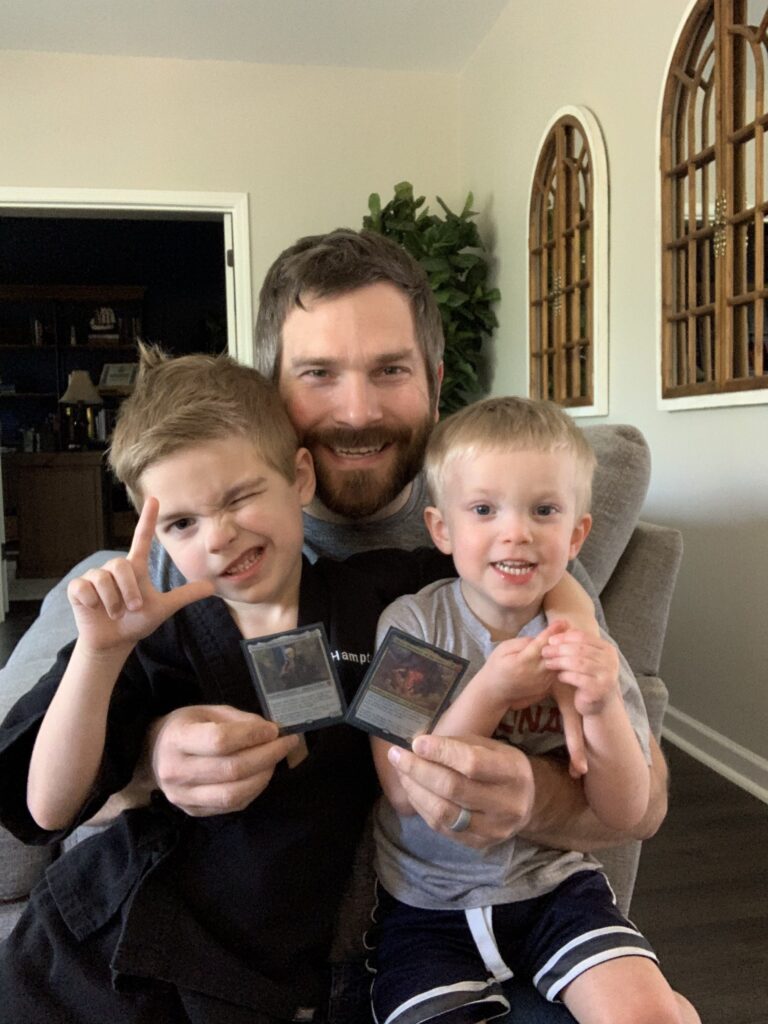
Covered by: Chris Lorensen
Budget constraints were one of the third place finisher’s favorite parts about the commander Precon League.
Jeff Haladay competed in the tournament and brought home the bronze using Trynn and Sylar and what he called ‘fair magic.’
“The colors are not the best, there’s no ramp, there’s no control elements,” Haladay said “It’s just a fair magic deck where you’re playing creatures and trying to attack with them as many times as possible until you win.”
Haladay says the best part of the budget is that it gives everyone a constraint to work with and levels the playing field.
“I’m a deck builder by trade, I don’t play … meta decks,” he said. “Commander as a whole I think you can get out-classed by a credit card and so having a budget … was intriguing.”
But even with those constraints, Haladay was surprised by some of the decks he ran into. Combo, for example, were the cause of about 3 of his 5 losses.
“The one time I was able to stop it (the combo) it was creature based and I was able to kill the creature before it happened.” he said. “With one on one it’s you alone and if you don’t have an answer when they got it, that’s it.”
That being the case, he still had a lot of fun building a mid-range aggro deck.
At the head of the deck were two partner commanders. Tryna, Champion of Freedom awarded him by creating human tokens at the end of turns he attacked on and Silvar, Devourer of the Free allowed him to sacrifice humans to put a +1/+1 counter on it and give it indestructible until end of turn.
“If I were building a deck for a multiplayer commander format, it would not be my first choice,” Haladay said. “I felt like it was under appreciated for a one on one match up.”
A main draw to those commanders, he said, was because there are so many humans there were a lot of different directions he could go in.
“I think there were three people playing the deck and we all had three different versions,” Haladay said.
While the main strategy of the deck was to get creatures down and attack, Haladay said that as the game goes on that strategy gets out classed and so there was a sacrifice sub theme built into the deck to allow him to turn his smaller tokens into value later.
Haladay said the biggest weakness of the deck, as with any aggro deck, was board wipes and that Silvar helped by ensuring at least one very large creature would survive. Additionally, the biggest upgrades were card draw as another way to recuperate from board wipes.
His second focus in upgrades was removal and once he felt he had that under control he focused on more specific interactions.
“Humans that didn’t allow lands to become creatures or didn’t allow the commander to come out or cards to be cast from anywhere other than hand, those types of things were kind of niche uses but very powerful as sideboard options.”
Haladay said his deck was well tuned fairly quickly. He said his deck reached a good spot fairly early in the tournament and really came together at about 5 to 6 weeks in.
“Because a lot of the humans are cheap, it was pretty easy to get a handful of cards every week for upgrades,” Haladay said.
He had a pretty good idea of upgrades he wanted to start with but still found some surprises along the way. Aside from mass amounts of cheap humans, Haladay also added one or two higher valued cards a week.
MVP’s off the deck were cards like Dictate of Erebos to control the board, Lukka Coppercoat Outcast to draw cards or turn tokens into creatures from his library or a combination of Fiend Hunter and Angel of Glory’s Rise to protect from board wipes.
To get some of these cards, Haladay had the LGS order cards ahead of time by pitching in with other players.
“Out of that starting list of 30 I had to order 10 of them,” he said. “Everyone turned in their list and they (the LGS) ordered it all.”
Haladay said he didn’t order anything he was on the fence about. And that he still focused on lots of lower cost cards up front instead of high priced bling.
“I think in most decks there are a significant amount of upgrades that people want to do that they’re not gonna buy a $15 card right off the bat,” he said. “They are still looking to replace 15 to 20 cards out of the deck.”
Haladay says that while the tournament was a learning experience where he saw things he never knew existed he doesn’t think he would have done anything different over the course of the tournament.
“I think, with the way I wanted to approach things, I picked a deck that maybe would be thought of as weaker and just played it the best I could,” he said.
